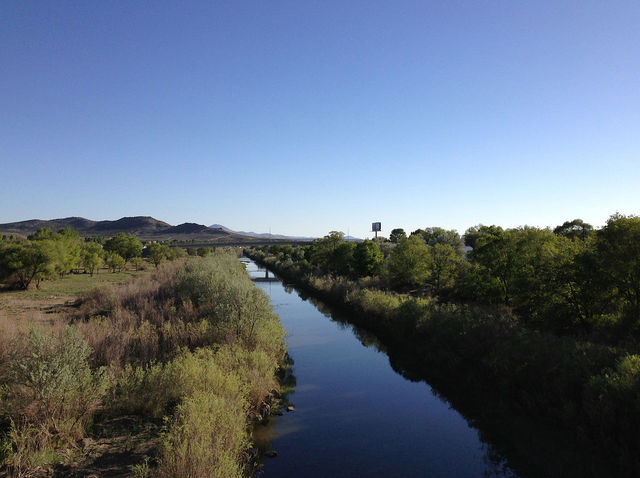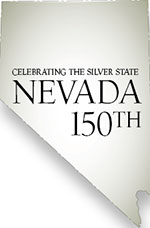Humboldt River flows through Nevada’s history
The humble Humboldt River may not be much to look at, but it has traced a colorful narrative arc through Nevada’s history.
From leading explorers across the Silver State to providing sustenance for its settlers, the Humboldt has played a crucial role in shaping Nevada’s economy and culture.
Even Mark Twain had a lively opinion on the Humboldt — well, he had a lively opinion on just about everything.
To understand why the Humboldt has been so important to Nevada, start with where it runs. The river starts north of Wells and flows west 330 miles to Lovelock. That makes it the longest river in America that begins and ends within the boundaries of one state, according to the Nevada Division of Wildlife. And that length doesn’t even count the Humboldt’s meandering ways; throw in its snaking from side to side in the valleys it flows through, and the river runs more than twice its as-the-crow-flies distance, researchers at the Nevada Division of Water Planning say.
Its general track made the Humboldt essential as a navigational tool for early explorers and migrants. Peter Skene Ogden of the Hudson’s Bay Co. is credited with discovering the Humboldt in 1828. Through the 1850s, Europeans used the river to trap beaver. Through the 1870s, the Humboldt mapped a key route for the California Emigrant Overland Trail, as wagon trains of pioneers followed the river and used it as a water source. It was a guide for part of the transcontinental railroad, as well as for today’s Interstate 80. Its basin has been home to some of the world’s biggest silver veins in the 1860s, as well as some of the globe’s most-productive gold mines from the 1960s through today.
But it took explorer John C. Fremont, the namesake of downtown’s Fremont Street and the man who literally put Las Vegas on the map, to anoint the Humboldt in 1845. Its namesake is German naturalist Baron Friedrich Heinrich Alexander von Humboldt, who died in 1859 and never saw the river that bears his name, according to Howard Hickson, director emeritus of Elko’s Northeastern Nevada Museum.
Erstwhile Virginia City journalist Twain did see the river, though, and was decidedly unimpressed.
“People accustomed to the monster mile-wide Mississippi grow accustomed to associating the term ‘river’ with a high degree of watery grandeur,” he wrote in his travelogue “Roughing It.” “Consequently, such people feel rather disappointed when they stand on the shores of the Humboldt or Carson and find that a ‘river’ in Nevada is a sickly rivulet which is just the counterpart of the Erie canal in all respects save that the canal is twice as long and four times as deep.”
Well.
Don’t let Twain’s downbeat review keep you from seeing Nevada’s quintessential river for yourself.
Today, the shores of the Humboldt are inaccessible in most places, either running through private property or flowing up against busy highways. The exception? The headwaters where the river begins, as well as much of its upwater third. There, fishermen can hook catches including trout, largemouth bass and walleye. Record hauls tracked by the state Division of Wildlife include a 17-pound white catfish and a 14-pound walleye.
Contact reporter Jennifer Robison at jrobison@reviewjournal.com or 702-380-4512. Follow @J_Robison1 on Twitter.





























